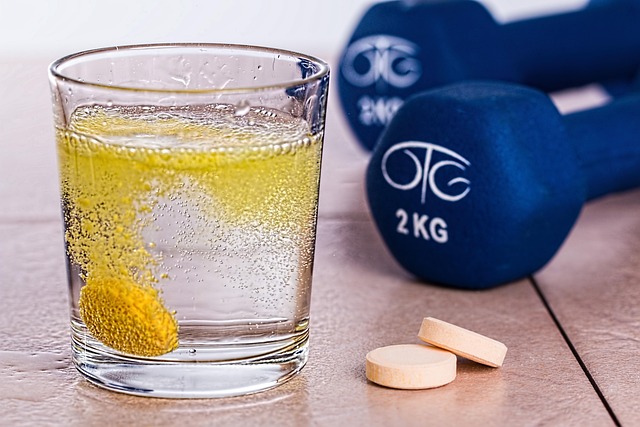Hydration, Nutrition, and Low-Impact Training for Skin Health
Healthy skin reflects multiple daily choices: consistent hydration, balanced nutrition, and gentle movement all support skin structure and tone. This short overview highlights practical habits—from water and protein intake to low-impact mobility work—that contribute to skin resilience and recovery over time.

Maintaining skin health relies on more than topical creams. Internal factors such as fluid balance, nutrient intake, and movement patterns influence collagen synthesis, circulation, and the skin’s ability to recover from daily stressors. A routine that combines hydration, targeted nutrition, and low-impact training can support improved texture, elasticity, and overall appearance while also benefiting posture and circulation. Below are focused sections covering how hydration, nutrition, mobility, strength, recovery, and supportive habits work together for healthier skin.
This article is for informational purposes only and should not be considered medical advice. Please consult a qualified healthcare professional for personalized guidance and treatment.
How does hydration affect skin?
Hydration is a foundational element for skincare because water supports cell turnover, nutrient transport, and barrier function. Adequate fluid intake helps the skin maintain plumpness and elasticity and can reduce the appearance of fine lines caused by temporary dehydration. Hydration is not just drinking water: it includes consuming hydrating foods like cucumbers and melons and limiting excessive alcohol or high-sodium meals that promote fluid loss. Topical moisturizers complement internal hydration by sealing water into the stratum corneum, improving tactile feel and reducing transepidermal water loss.
What role does nutrition play in skin health?
Nutrition supplies the building blocks for tissue repair and antioxidant defense. Proteins and amino acids are essential for collagen and elastin production; vitamins A, C, and E act as cofactors and antioxidants that protect against oxidative stress; and healthy fats support the lipid barrier that keeps skin supple. Emphasize whole foods: lean proteins, colorful vegetables and fruits rich in vitamin C, nuts and seeds for vitamin E and omega fatty acids, and a balanced intake of complex carbohydrates. Mindful eating supports not only surface appearance but also the metabolic processes that enable skin regeneration.
Can mobility and low-impact strength training help skin?
Low-impact training and targeted mobility work improve circulation and muscle tone without excessive inflammation. Gentle resistance exercises and mobility sequences support posture, which in turn affects how light and shadow fall on the face and body, and reduce mechanical stress on the skin. Improved blood flow delivers nutrients and oxygen more efficiently to the skin, supporting recovery and collagen maintenance. Examples include bodyweight squats, resistance-band rows, swimming, pilates, and controlled walking—activities that build strength and mobility while minimizing joint strain.
How do recovery, sleep, and circulation aid skin repair?
Recovery is a critical but often overlooked component of skin health. Quality sleep enables growth hormone release and cellular repair processes that directly influence collagen turnover and inflammation moderation. Active recovery—light stretching, gentle walking, or foam rolling—supports healthy circulation, helping clear metabolic byproducts and deliver nutrients. Hydration and nutrient timing around exercise also reduce prolonged inflammation. Consistent sleep patterns and restorative practices reduce cortisol-driven breakdown of connective tissue and help the skin retain a more even tone.
What about collagen and antioxidants in a routine?
Collagen is a structural protein; dietary protein and certain nutrients support the body’s ability to synthesise and repair it. Vitamin C is a necessary cofactor for collagen formation, while zinc supports tissue repair. Antioxidants such as polyphenols and carotenoids neutralize free radicals that damage collagen and lipids in skin cells. Incorporate antioxidant-rich foods—berries, leafy greens, and brightly colored vegetables—and prioritize adequate protein each day. Supplements may be considered when dietary needs are unmet, but whole-food strategies are the primary recommendation for sustained support.
How can posture and stretch support skin appearance?
Posture influences facial and body contours by altering muscle balance and the mechanical load on tissues. Chronic forward head posture or rounded shoulders can create skin folds and accentuate creasing over time. Regular stretch and mobility sessions focusing on the chest, neck, and upper back restore alignment and reduce tension. Improved posture enhances circulation and lymphatic flow, which can reduce puffiness and promote a more open, buoyant appearance. Simple daily habit changes—short mobility breaks, ergonomic adjustments, and mindful stretching—yield cumulative benefits for skin and structural resilience.
Conclusion Skin health is multifactorial: hydration, balanced nutrition, and consistent low-impact training combine to support collagen production, circulation, and recovery. Emphasizing protein and antioxidant-rich foods, maintaining adequate fluid intake, prioritizing restorative sleep, and including mobility-based strength work form a practical, sustainable approach. Over time these habits contribute to improved texture, reduced inflammation, and better overall skin resilience without relying solely on topical products.





